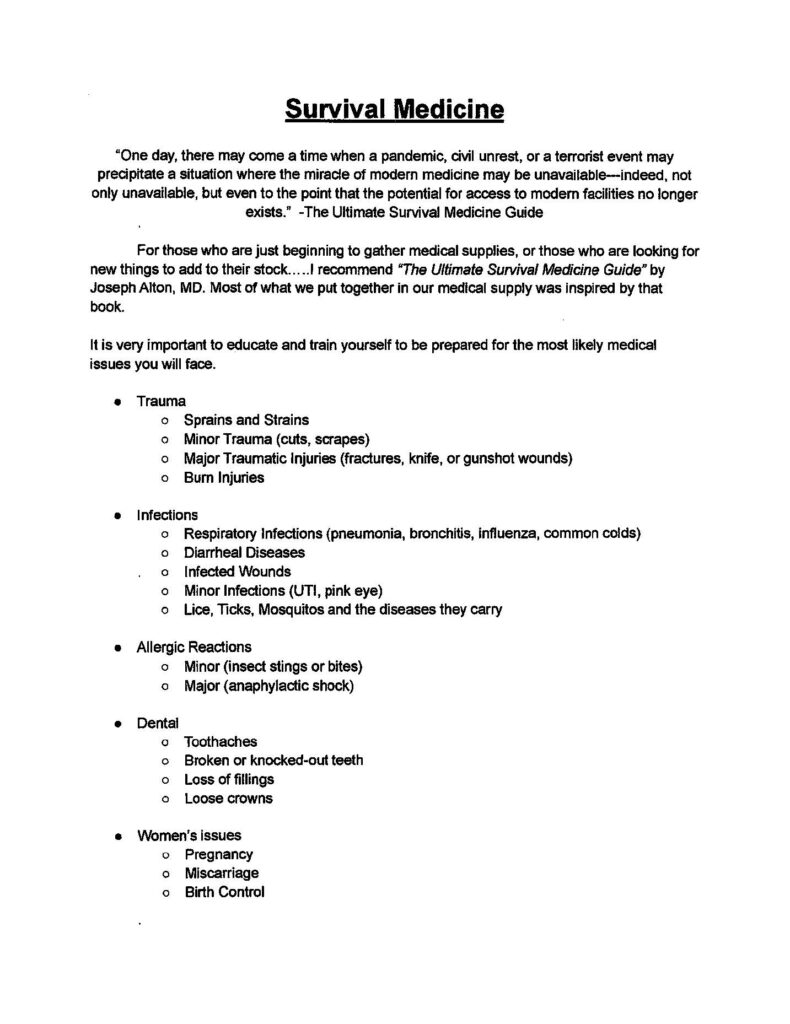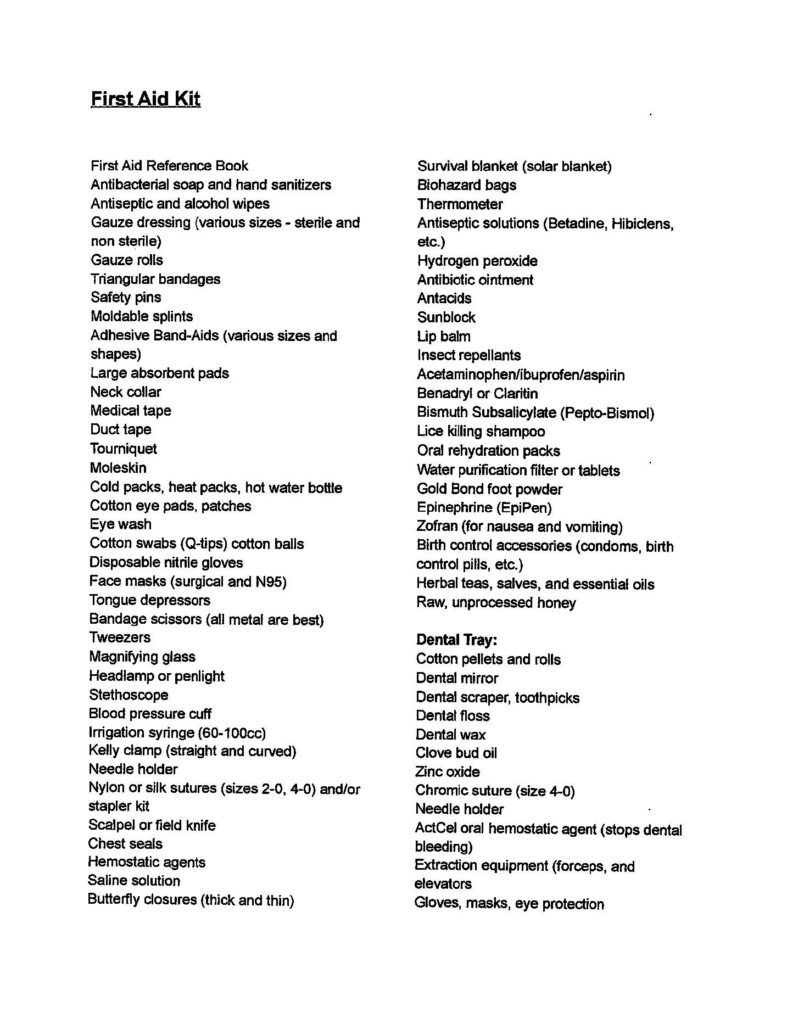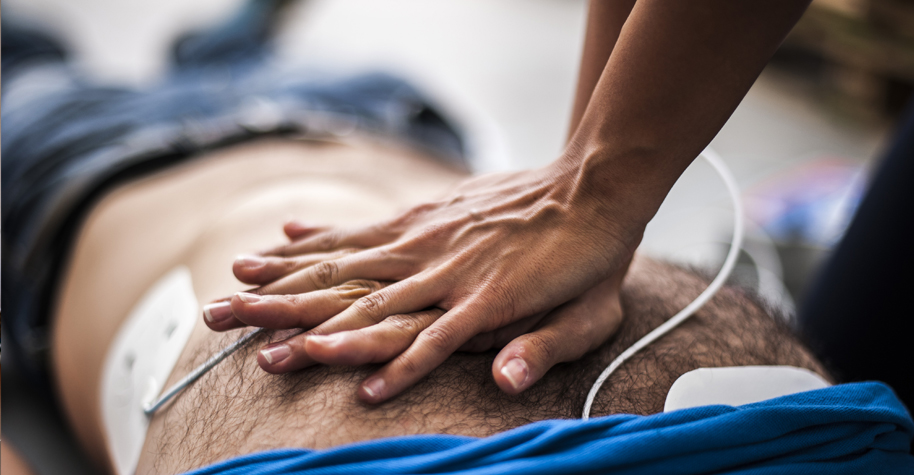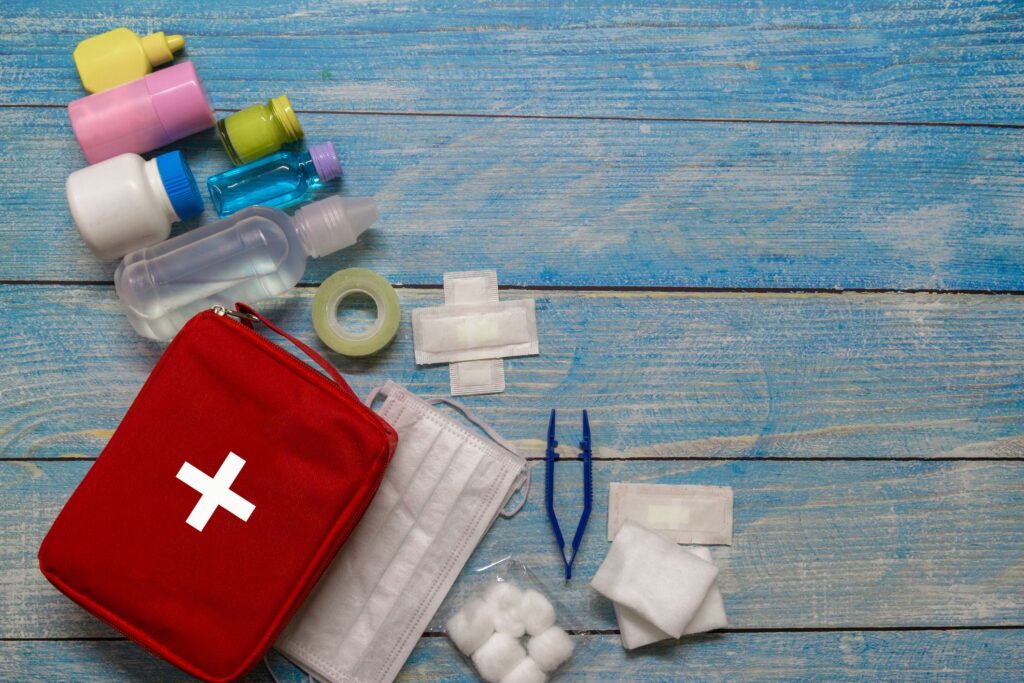
How can you prepare yourself and your family for medical emergencies that can happen any day or for a disaster situation when the emergency medical system is not readily available?
Reliable Sources
Healthcare providers rely on reliable sources of information. You would expect your doctor, paramedic, nurse practitioner, PA or nurse to consult textbooks, manuals, journal articles and medical meeting lecture notes to give you up to date medical care. Regular training and courses are necessary. While you may not have made healthcare your profession, all of us have occasions to provide care to others and ourselves.
Here are several references that can help you learn what needs to be done when you are the one who needs to provide the care:
There are many things to think about and supplies to have at the ready when disaster strikes. This article has links within it to help you organize the medications and prescriptions you and your family need, collect essential healthcare paperwork and records, important information about CPR and using AEDs, and how to use power sources like generators safely:
Handwashing is one of the simplest and most effective things you can do to prevent illness and infection. Of all the things you can have in your First Aid supplies, soap and water should be right at the top of the list!
Wounds that are washed with soap and water are much less likely to become infected. Washing your hands properly with soap and water is the best way to prevent colds and flu!
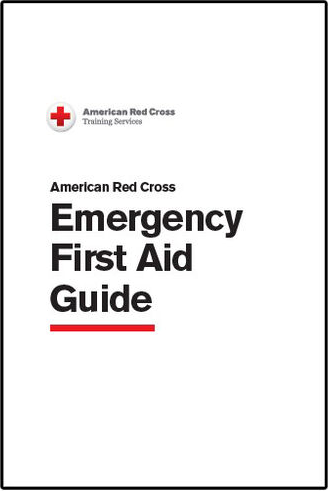
American Red Cross Emergency First Aid Reference Guide
This $4 booklet has 90 pages of clearly explained and color illustrated First Aid information that is quickly and easily found so you know what to do in emergency medical situations: Bleeding, Burns, Heart Attack, Stroke, Wound Care, Diabetic Emergencies, etc, etc. It has information about Red Cross Training Services. It is the size of your hand and is one of the best things you can have in your first aid kit!
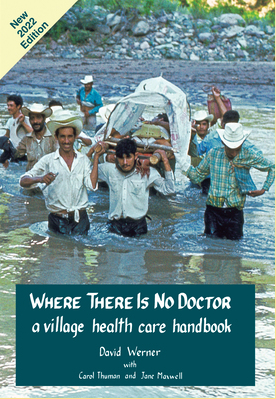
by David Werner, Carol Thuman and Jane Maxwell
Hesperian Health Guides
This $27 paperback book is written as a “village health care handbook” for those who live far from medical centers, in places where there is no doctor. But even where there are doctors, people can and should take the lead in their own health care. Reading this book can be good preparation for disaster situations. The book has guidelines about what to do, but also when to seek help.
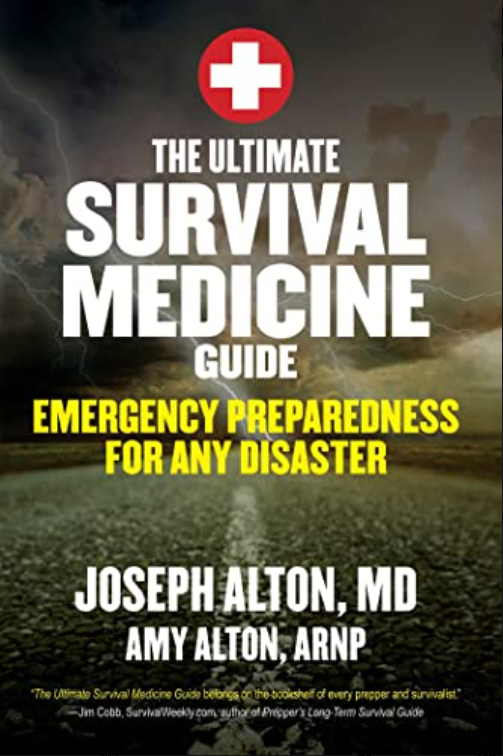
The Ultimate Survival Medicine Guide / Emergency Preparedness for Any Disaster
by Joseph Alton, M.D. and Amy Alton, ARNP
This $13 paperback is written to those who want to be medically prepared in times of trouble. In the introduction to the book it says, “Although your will not be a physician after reading this book, you will certainly be more of a medical asset to your family, group, or community than you were before”. There are helpful instructions for putting together first aid and disaster medical kits.
Personal health preparedness isn’t only about collecting supplies. Level up your emergency
preparedness. Learn practical skills you can use to help yourself and others. Here are 10 skills you can
learn to prepare for an emergency, in no particular order.
- How to wash your hands the right way. Washing your hands is one of the most effective ways
to prevent the spread of germs. Clean hands can help stop the spread of respiratory and
diarrheal infections from one person to another. Follow these five steps to wash your hands the
right way every day, including during an emergency. - How to administer CPR. Cardiopulmonary resuscitation (CPR) can help save a person’s life if
their breathing or heart stops. You don’t need a special certification or formal training to
perform CPR, but you do need education. Hands-only CPR is simple to learn and easy to
remember. - How to work an automated external defibrillator (AED). AEDs give step-by-step voice
instructions, but training is still recommended. Classes can teach you how to recognize the
signs of a sudden cardiac arrest, when to call emergency medical services, how to administer
CPR, and how to use an AED. - How to use a portable generator. Portable generators produce a poison gas called carbon
monoxide (CO). The risk of CO poisoning increases after an emergency. If using a generator
during a power outage, remember to always:
o place it outdoors at least 20 feet away from any window, door, or vent.
o operate it in a dry area.
o use a battery-powered or battery back-up CO detector. - How to perform first aid. The risk for injury during and after an emergency like a natural
disaster is high. Prompt first aid can help heal small wounds and prevent infection. It is
important to know how to care for cuts, burns, and other kinds of injuries. Keep a well-stocked
and maintained first-aid kit that includes an emergency first-aid reference guide. - How to stop severe bleeding. Serious injuries can cause heavy bleeding. A person who is
bleeding can die from blood loss within five minutes. If you are a bystander to a medical
emergency, you are the help until professional help arrives. Learning what to do in a bleeding
emergency, including how to apply a tourniquet, can save a person’s life. A tourniquet is a last
resort if applying pressure does not stop the bleeding. - How to help someone who is choking. Fast action can save the life of someone who is choking.
Young children are at especially high risk of choking. They can choke on foods like hot dogs and
grapes, and small objects like toy pieces and coins. Learn when and how to do back blows and
perform abdominal thrusts. - How to turn off utilities. Household utilities can pose potential health and safety threats after
an emergency. Know where and how to turn them off in the aftermath of a natural disaster like
an earthquake. Contact your utility providers with questions. - How to use a fire extinguisher. Use fire extinguishers on small fires only. When operating a fire
extinguisher, remember the acronym PASS:
o Pull the pin.
o Aim low at the base of the fire.
o Squeeze the lever slowly and evenly.
o Sweep the nozzle from side to side. - How to call 9-1-1. While making the call is easy, you may not know what to expect when you
call. Prepare to answer questions about yourself and the emergency. Your answers help the
call-taker get the right kind of help to you. Also, don’t hang up until the call-taker instructs you
to do so. Many 911 centers can tell you how to help until professional help arrives.
Honorable mentions include learning how to keep food safe after an emergency, how to make water
safe, how to administer naloxone, and how to perform seizure first aid.
- Three Things You May Not Know About CPR
- Emergency Wound Care After a Natural Disaster
- Safety Skills, FEMA
RESPONSIBLE: “RESPONSE – ABLE”
This word comes to English from French, where the word is “responsable”. Every family, neighborhood and community needs people who are ABLE TO RESPOND to medical emergencies and health care needs in a crisis, disaster, or especially in emergencies that can happen to any of us on any day!
You are interested in the information available at the Preparedness Fair, you are reading this. That means that you are one of those who are learning to become ABLE TO RESPOND!
Imagine a disaster situation. An explosion happens and many people are severely injured, you are not. How can you respond?
First and foremost, prioritize safety: The safety of the patient and yourself should be the top priority. Make sure that the area is safe and secure as at top priority as you provide medical assistance.
Assess the situation: As quick as possible, assess each injured person’s condition and determine the severity of the injury or illness. Look for any life-threatening injuries such as severe bleeding, difficulty breathing, or unconsciousness. There is a way to remember how to sort out the critical cases:
“30 – 2 – Can Do”
TRIAGE. This going from patient to patient to quickly decide who needs immediate treatment, those whose treatment can be delayed, and who has minimal injuries they can manage themselves.
IMMEDIATE TREATMENT
- AIRWAY AND BREATHING. Is their airway obstructed? Open the airway by tilting the head back. (During mass casualty triage the rule about making sure there is no cervical spine injury is temporarily suspended). If the victim is breathing 30 times or more a minute, it is a critical case.
- CIRCULATION. Feel for the pulse, wrist or neck (carotid pulse). Another quicker way is to assess capillary refill. It is easy: press on a nail bed or finger pad and see how long it takes for the color to come back. (Try it on yourself right now). It will go from white to normal color in less than 2 seconds if there is good perfusion. This is abbreviated CRT, Capillary Refill Time. If it is less than 2 seconds, that patient needs immediate treatment.
- MENTAL STATUS. Can the person follow simple commands? If they are unconscious or disoriented, they need immediate attention. If they “Can Do”, that is understand you and follow commands, then treatment can come back to them later.
It is important to do TRIAGE, sort out in the first minutes of a mass casualty incident (“MCI”) who needs immediate intervention in order to stay alive. It is very possible that some of the victims will be dead, or nearly so. When time is critical, remembering the simple “30 – 2 – Can Do” can save the lives of those who can be saved. Adapted from Joseph Alton, M.D. The Ultimate Survival Medicine Guide, pp 45-46.
Some examples of immediate, critical treatment include:
- Stop bleeding: If the patient is bleeding heavily, apply pressure to the wound to stop the bleeding. Use clean cloth or bandages if available. Using a tourniquet appropriately saves lives. Elevate legs in cases of shock.
- Stabilize fractures: If the patient has a broken bone, stabilize the injury by immobilizing the affected area using a splint or other materials available.
- Provide basic first aid: Provide basic first aid such as cleaning wounds, administering pain relief medication, or providing fluids to prevent dehydration.
- Monitor vital signs: Monitor the patient’s vital signs such as pulse, breathing rate, and blood pressure if possible.
- Stay calm and provide reassurance: Staying calm can help the patient feel reassured and more relaxed. Keep a reassuring tone of voice and provide the patient with information about what you are doing to help them.
- Contact emergency services: If the patient’s condition is serious, contact emergency services as soon as possible. While pressing 9-1-1 in your phone is easy, you need to anticipate what to expect when you call. Prepare to answer questions about yourself and the emergency. Your answers help the call-taker get the right kind of help to you. Also, don’t hang up until the call-taker instructs you to do so. Many 911 centers can tell you how to help until professional help arrives.
- Prioritize resources: In a disaster situation, medical resources may be limited. Prioritize the use of resources for the most critically ill or injured patients.
- Stay safe: Remember to take care of yourself as well. Be aware of any potential hazards and take steps to protect yourself from harm.
MEDICINES AND PRESCRIPTIONS
In the event of a natural disaster, it may be difficult to obtain prescription medications or access to medical facilities. In such situations, it is good to have a supply of prescriptions that your and members of your household need.
It is important to MAKE A LIST OF THE MEDICATIONS AND ALLERGIES for each member of your household. This is just like the list you are asked to fill out when you go to the doctor. Having it written out is essential so that life-saving medications are not forgotten in a crisis.
Often you can ask your doctor’s office to prescribe additional supply. Even having a supply of two weeks’ worth of your medications can be live saving when the medical and pharmacy system is temporarily not functioning as normal. Often you can ask to have a recurring prescription to be filled a few days early and this can help start the emergency supply for you.
In addition, there are several over the counter medications that should be kept on hand that that people can use to manage certain health conditions. Here are some examples:
Pain Relief
Over-the-counter pain medications like ibuprofen or acetaminophen can help alleviate pain. However, aspirin should be avoided in case of bleeding injuries.
Allergies
Antihistamines like diphenhydramine (Benadryl) or loratadine (Claritin) can be used to treat mild to moderate allergic reactions.
Stomach Problems
Antacids like Tums or medications like Pepcid (famotidine) can be used to manage heartburn, acid reflux, and upset stomach. Pepto-Bismol and Lomotil can be helpful.
Cuts and Lacerations
Soap and Water. Regularly cleaning a wound with soap and water goes a long way in preventing infection. It is important to keep the area dry and covered with clean bandages. If a band-aid or dressing gets wet from water getting on it or from sweat, it is important to repeat the cleaning with soap and water and then drying it and applying a new dressing. Hydrogen peroxide or isopropyl alcohol can be used to clean wounds, and antibiotic ointments like Bacitracin or Neosporin may need be applied to treat infection. Remember that ointments can attract dirt, so the dressing needs to keep the wound covered.
Asthma and Respiratory Problems
Bronchodilators like albuterol can help open airways and improve breathing in people with asthma or other respiratory conditions. Asthmatics and people with COPD need to make sure they have an adequate emergency supply of their daily medications and rescue inhaler.
Hypertension
In cases of high blood pressure, reducing salt intake and engaging in relaxation techniques like deep breathing, meditation or yoga may help. Again, having an adequate back-up supply of blood pressure medications so these can be continued when the supply-chain or the health care system isn’t functioning normally will prevent stroke, heart attack or kidney damage that can happen if a person’s blood pressure medicine isn’t taken.
Supplements & Alternative Medications
Many people find that supplements and alternative medications are helpful to them. Those that find these helpful will want to have an adequate supply on hand. Herbs have been used for centuries for various medicinal purposes, including managing certain health conditions. While there is limited scientific evidence supporting their effectiveness, some herbs can be used in the event of a natural disaster to help alleviate symptoms or manage health conditions. Here are some examples:
Chamomile
Chamomile is often used to treat insomnia, anxiety, and digestive problems. It can be consumed as a tea or applied topically to reduce inflammation and promote wound healing.
Echinacea
Echinacea is believed to boost the immune system and help prevent and treat infections. It can be taken as a tea, capsule or tincture.
Ginger
Ginger is commonly used to treat nausea, vomiting, and digestive problems. It can be consumed as a tea, or added to soups and other dishes.
Garlic
Garlic is known for its antimicrobial and immune-boosting properties. It can be added to foods, or taken in supplement form.
Peppermint
Peppermint is often used to treat digestive problems and alleviate headaches. It can be consumed as a tea or applied topically to relieve pain.
Aloe Vera
Aloe vera is commonly used topically to soothe burns, cuts, and other skin injuries. Its gel can be applied directly to the affected area.
It’s important to note that some herbs can have side effects and interactions with medications. It’s always best to consult with a healthcare professional before taking any herbs or supplements, especially if you have a medical condition or are taking medications. For example, ginger, ginseng, and garlic can inhibit platelets and can keep blood from clotting normally. That is why surgeons ask their patients not to take these supplements for the several days before surgery. People that are on prescription blood thinners or that have large wounds that are healing should avoid these supplements. With those cautions in mind, there are many natural remedies that have stood the test of time and can be helpful.
FIRST AID KITS
Having adequate medical and first aid supplies is obviously very helpful in a crisis or disaster. Even more important is learning how to use them! There are many types of first aid kits, from personal to military. Below is the handout from a recent Preparedness Fair. It has a list of what could be in a reasonably comprehensive first aid kit. What you have in yours would depend on what your household or organization needs, and what you are feel you can put to use.
Survival Medicine
